
The Canadian Shield, also called the Laurentian Shield or the Laurentian Plateau, is a geologic shield, a large area of exposed Precambrian igneous and high-grade metamorphic rocks. It forms the North American Craton, the ancient geologic core of the North American continent. Glaciation has left the area with only a thin layer of soil, through which exposures of igneous bedrock resulting from its long volcanic history are frequently visible. As a deep, common, joined bedrock region in eastern and central Canada, the shield stretches north from the Great Lakes to the Arctic Ocean, covering over half of Canada and most of Greenland; it also extends south into the northern reaches of the continental United States.

Simon Fraser University (SFU) is a public research university in British Columbia, Canada, with three campuses, all in Greater Vancouver: Burnaby, Surrey, and Vancouver. The 170-hectare (420-acre) main Burnaby campus on Burnaby Mountain, located 15 kilometres (9.3 mi) from downtown Vancouver, was established in 1965 and comprises more than 30,000 students and 160,000 alumni. The university was created in an effort to expand higher education across Canada.

Kimberlite, an igneous rock and a rare variant of peridotite, is most commonly known to be the main host matrix for diamonds. It is named after the town of Kimberley in South Africa, where the discovery of an 83.5-carat diamond called the Star of South Africa in 1869 spawned a diamond rush and led to the excavation of the open-pit mine called the Big Hole. Previously, the term kimberlite has been applied to olivine lamproites as Kimberlite II, however this has been in error.
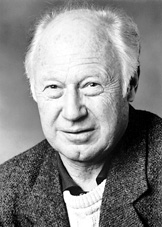
Michael Smith was a British-born Canadian biochemist and businessman. He shared the 1993 Nobel Prize in Chemistry with Kary Mullis for his work in developing site-directed mutagenesis. Following a PhD in 1956 from the University of Manchester, he undertook postdoctoral research with Har Gobind Khorana at the British Columbia Research Council in Vancouver, British Columbia, Canada. Subsequently, Smith worked at the Fisheries Research Board of Canada Laboratory in Vancouver before being appointed a professor of biochemistry in the UBC Faculty of Medicine in 1966. Smith's career included roles as the founding director of the UBC Biotechnology Laboratory and the founding scientific leader of the Protein Engineering Network of Centres of Excellence (PENCE). In 1996 he was named Peter Wall Distinguished Professor of Biotechnology. Subsequently, he became the founding director of the Genome Sequencing Centre at the BC Cancer Research Centre.

Richard Marvin Hansen is a Canadian track and field athlete, activist, and philanthropist for people with disabilities. Following a pickup truck crash at the age of 15, Hansen sustained a spinal cord injury and became a paraplegic. Hansen is most famous for his Man in Motion World Tour, in which he circled the globe in a wheelchair to raise funds for charity. He was inducted into Canada's Sports Hall of Fame in 2006. He was one of the final torchbearers in the 1988 Winter Olympics and the 2010 Winter Olympics. He was profiled and spoke during the 2010 Winter Paralympics opening ceremony.

Mount Garibaldi is a dormant stratovolcano in the Garibaldi Ranges of the Pacific Ranges in southwestern British Columbia, Canada. It has a maximum elevation of 2,678 metres and rises above the surrounding landscape on the east side of the Cheakamus River in New Westminster Land District. In addition to the main peak, Mount Garibaldi has two named sub-peaks. Atwell Peak is a sharp, conical peak slightly higher than the more rounded peak of Dalton Dome. Both were volcanically active at different times throughout Mount Garibaldi's eruptive history. The northern and eastern flanks of Mount Garibaldi are obscured by the Garibaldi Névé, a large snowfield containing several radiating glaciers. Flowing from the steep western face of Mount Garibaldi is the Cheekye River, a tributary of the Cheakamus River. Opal Cone on the southeastern flank is a small volcanic cone from which a lengthy lava flow descends. The western face is a landslide feature that formed in a series of collapses between 12,800 and 11,500 years ago. These collapses resulted in the formation of a large debris flow deposit that fans out into the Squamish Valley.

The Ekati Diamond Mine, often simply called Ekati, is Canada's first surface and underground diamond mine and is owned by Burgundy Diamond Mines. It is located 310 km (190 mi) north-east of Yellowknife, Northwest Territories, and about 200 km (120 mi) south of the Arctic Circle, near Lac de Gras. Until 2014, Ekati was a joint venture between Dominion Diamond Mines (80%), Chuck Fipke, and Stewart Blusson, the two geologists who discovered kimberlite pipes north of Lac de Gras. Fipke and Blusson each held 10% stake in the mine, until Fipke sold his share to Dominion. In 2021, Arctic Canadian Diamond Company Ltd. acquired the Ekati Diamond Mine with associated assets and liabilities from Dominion Diamond Mines. In July 2023, Burgundy Diamond Mines purchased full control of Arctic Canadian Diamond Company.

Charles Edgar "Chuck" Fipke is a Canadian geologist and prospector who discovered the existence of diamonds around Lac de Gras in Canada's Northwest Territories. He is now a multimillionaire involved in geological explorations around the world. Fipke is also a prominent owner and breeder in North American thoroughbred horse racing.

Canadian diamonds are diamonds which have been mined in any one of the provinces and territories of Canada. Diamond-rich areas were not commercially extracted in Canada until the early 1990s. For the first 60 years of the 20th century, diamonds originated from kimberlite pipes and alluvial deposits in places such as Africa and some from South America. Later, diamond discoveries were made in the Soviet Union. Since the 1990s, major diamond discoveries were made and mining operations began. Canadian diamonds play a large role in the world market of diamonds.
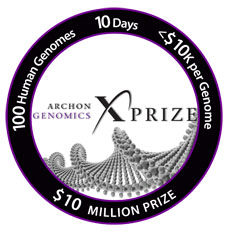
The Archon Genomics X PRIZE presented by Express Scripts for Genomics, the second X Prize offered by the X Prize Foundation, based in Playa Vista, California, was announced on October 4, 2006 stating that the prize of "$10 million will be awarded to the first team to rapidly, accurately and economically sequence 100 whole human genomes to an unprecedented level of accuracy." The 30 day evaluation phase of the competition to begin on September 5, 2013, was canceled August 22, 2013 and this cancellation was debated on March 27, 2014.
The Squamish people are an indigenous people of the Pacific Northwest Coast. Archaeological evidence shows they have lived in the area for more than a thousand years. In 2012, there was population of 3,893 band members registered with the Squamish Nation. Their language is the Squamish language or Sḵwx̱wú7mesh snichim, considered a part of the Coast Salish languages, and is categorized as nearly extinct with just 10 fluent speakers as of 2010. The traditional territory is in the area now in southwestern British Columbia, Canada, and covers Point Grey as the southern border. From here, it continues northward to Roberts Creek on the Sunshine Coast, up the Howe Sound. The northern part includes the Squamish, Cheakamus, Elaho and Mamquam rivers. Up the Cheakamus River it includes land past Whistler, British Columbia. The southern and eastern part of their territory includes Indian Arm, along Burrard Inlet, through False Creek then English Bay and Point Grey. Today the Squamish people live mostly in seven communities, located in West Vancouver, North Vancouver, and within and nearby to the District of Squamish.
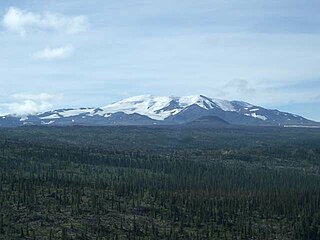
Volcanic activity is a major part of the geology of Canada and is characterized by many types of volcanic landform, including lava flows, volcanic plateaus, lava domes, cinder cones, stratovolcanoes, shield volcanoes, submarine volcanoes, calderas, diatremes, and maars, along with less common volcanic forms such as tuyas and subglacial mounds.
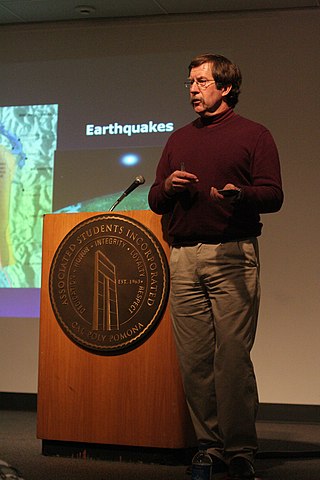
John Joseph Clague PhD FRSC OC is a Canadian authority in Quaternary and environmental earth sciences. He is a professor of earth sciences at Simon Fraser University and an emeritus scientist of the Geological Survey of Canada.
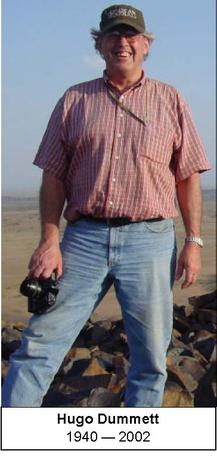
Hugo T. Dummett (1940–2002) was a South African mineral-exploration geologist who is best known for his role in the discovery of the Ekati Diamond Mine in the Barren Lands of Canada's Northwest Territories. Dummett has been described as "the brains, the ideas and the energy" behind the discovery of Ekati, which led to the creation of a new Canadian diamond-mining industry.

Michael James Audain, is a Canadian home builder, philanthropist and art collector. He is the Chairman and major shareholder of the privately held Polygon Homes Ltd., one of the largest multi-family builders in British Columbia.

Anne Giardini,, ,, is a Canadian business executive, journalist, lawyer and writer. She is the oldest daughter of late Canadian novelist Carol Shields. Giardini is licensed to practice law in British Columbia. As a journalist, Giardini has contributed to the National Post as a columnist. She lives in Vancouver, British Columbia with her husband of more than 30 years. They have three grown children. She has written two novels, The Sad Truth about Happiness (2005) and Advice for Italian Boys (2009), both published by HarperCollins. Giardini and her son, Nicholas Giardini, edited Startle and Illuminate, a book of Carol Shields' thoughts and advice on writing. Giardini served as the 11th chancellor of Simon Fraser University from 2014 to 2020.

Joy Louise Johnson is the 10th President and Vice-Chancellor of Simon Fraser University in Burnaby, British Columbia, Canada. A health scientist and researcher in gender and health, she became the first woman to be appointed Vice-President Research at Simon Fraser in 2014.

Marianne Boelscher Ignace is a Canadian linguist and anthropologist. Married into the Shuswap people, she is a Full professor in the departments of Linguistics and Indigenous Studies at Simon Fraser University (SFU), and Director of SFU's Indigenous Languages Program and First Nations Language Centre. In 2020, Ignace was elected a Fellow of the Royal Society of Canada for her work in revitalizing and preserving indigenous languages.














